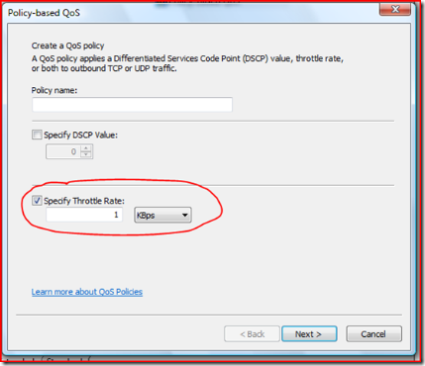WinServer Longhorn and WinVista: Like to Two Peas in a Pod...er...On a Network
Your humble blogger returns after surviving a cross-country trip to ol' New York on "vacation". Vacation is in quotes because, well, I need one now that I'm back.
On to business!
While I was out, J. Nicholas Hoover of InformationWeek published a "Top Seven" (Letterman fans unite) on Windows Vista features that need a little help from Windows Server "Longhorn" to light up:
Seven Windows Vista Features That Depend On Longhorn Server
This is pretty cool because it highlights things like:
- Network Access Protection:
"Microsoft's access control method--network access protection--is built into Vista and Longhorn. NAP lets administrators define policies that, for example, require that anyone who wants to connect to a network run Vista with the latest patches plus valid anti-spyware and anti-spam applications, or be denied access." - Policy-based Quality of Service:
"Microsoft mostly left quality of service--controlling bandwidth priority for certain apps and users--to networking vendors. Now it's making that better with Vista and Longhorn via an upgraded network protocol stack." - IPv6:
"IPv6 is an Internet Protocol upgrade that promises to dramatically increase the number of viable addresses, and it's native in Vista and Longhorn."
The article (in the short space of 985 words) does generalize a bit. Like the comment that NAP for XP doesn't necessarily "interoperate with some popular enforcement mechanisms and won't work without Longhorn. " So, it's important to check out the links I provided above for some additional, deeper details on these technologies and features.
Going back to my example, NAP "technically" only requires a single WinServer "Longhorn" server running the Network Policy Server (NPS) role. You'd likely have a few more of these around for fault tolerance and to scale out across large networks. Secondly, we're doing a lot to ensure the XP NAP add-on client will provide a good deal of parity to the built-in client for Windows Vista.
One other reference that is worth a deeper review is related to the work we've done with Policy-based Quality of Service (QoS). Hoover generalizes about how "Longhorn will assign priority and bandwidth limits to applications on a network" and that it only works "if there's a Vista client on the other end. "
Well, that's mostly true.
Here's the scoop. Yes, we now have mechanisms within Windows Vista and Windows Server "Longhorn" to provide centralized management of QoS policies. We call that bit Policy-based QoS. As the link above details, this provides a means to "stamp" outgoing packets with a DiffServ (DSCP) value (one of them Internet standards) so your routing fabric knows how to manage the priority of this traffic using it's existing QoS queues. For this "stamping" to occur, the host needs to be either a Windows Vista client or a Windows Server "Longhorn" server (no current plans for down-level support). If the host on the other end is not one of these (or even Windows) this will have no impact on the QoS policy. The routers just need to support DSCP (which is quite common since this was outlined in RFC 2474 in 1998).
As for the bandwidth throttling, this do not require a specific host or router/switch on the other end either. The client (or server) will simply slow the pace based on the policy created (see below for an example) for the application or network address/port/service you define.
There are a bunch of other things we do to improve network performance and scalability that improve even further when you have Windows Vista on the client and Windows Server "Longhorn" on the back end. Check out the webcast I did back in October 2006 that covers off these "better together" networking scenarios.
Overall, it is super cool to have these numerous networking features highlighted in this top seven list. Thanks Nick! I just wanted to make sure you had all the details at your disposal.
